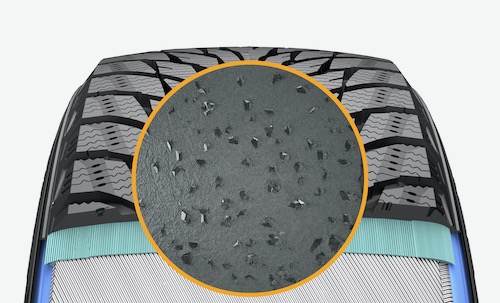When you drive in winter conditions, you will need to have tires that are approved for these challenging conditions. Winter conditions include snow, ice, slush and freezing temperatures. All these make all-season tires the wrong choice as they have the wrong rubber compound for winters, as the rubber used in all-season tires will become hard at low temperatures. Due to the fact that they become hard, winter tires outperform all-season tires as the temperatures get closer to freezing. You also need the tread pattern that is optimized for snow, ice and slush.
Winter tires are absolutely necessary for driving safely during the winter, when driving on ice, snow or slush, your summer tires don’t stand much of a chance to keep you safely on the road. This is why winter tires are so important and why it is very important that you have them mounted before the cold winter weather arrives. If you are dependent on your car for everyday use, it is important that you take care of it before the first snow. You will otherwise risk having to leave your car behind if you still have all-season tires mounted when winter conditions arrive unexpectedly before you change.
Driving with all-season tires in winter conditions, regardless of how short distance you drive, is associated with great danger. That is why you shouldn’t attempt it and why you should make sure that you change the tires early enough so that you don’t put yourself in that situation. Weather can be quite unpredictable, so it is sometimes difficult to know just how early the winter weather will arrive. During fall the risk increases, and you should almost surely change before November even if the winter hasn’t arrived, but you know it will not be far away once you enter into November.
Winter tires can be either studded or non-studded, where if you use studded tires, then you might have some restrictions both on the earliest date that you can use them and also where they can be used. With non-studded tires there are not any restrictions in terms of their use. With non-studded tires you might as well mount them on a certain date and not risk anything and stay safe. Winter tires have been designed for tackling the challenging weather such as snow, ice and slush. You need to have the special winter tread that has been designed to handle those conditions.
Both non-studded and studded tires are great at handling winter conditions in a safe and reliable way to give your car the control and grip that you need for safe driving. Their tread is optimized for cold weather and the winter conditions to provide you with the safest alternative for the winter season. When the winter has passed, then it is time to change back to all-season tires. Don’t change back too early but also not too late as the tire wear will be higher if you drive with winter tires longer than necessary.
For more information regarding winter tires, visit: nokiantires.com
